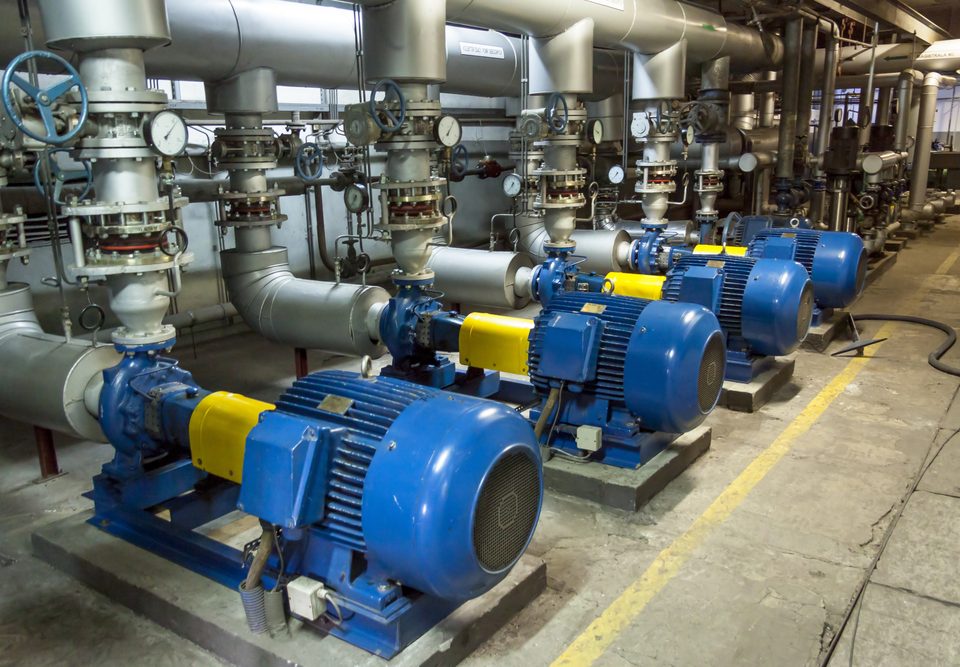
Equipment Series – Steam Turbines
May 10, 2018
Do I Need an Authorized Rexnord Service Center?
September 25, 2018Equipment Series – Wind Turbines

In the next installment of our Equipment Series, we will focus on wind turbines. A wind turbine uses the natural movement of air to spin the turbine and create energy. They are manufactured in a wide range of vertical and horizontal axis turbines. The smallest wind turbines can be used to charge batteries or as an auxiliary power source in boats or caravans. Larger turbines can be used as part of a domestic power grid, with the largest turbines being used as part of wind farms, or power grids supplied entirely by wind.
How a Wind Turbine Works
Wind turbines operate on the simple principle of using two or three propellers connected to a rotor that converts wind energy to low speed rotational energy. The rotor is connected to the main shaft that creates electricity by spinning a generator. The generator generally includes the control electronics, a gear box, adjustable-speed drive or continuously variable transmission, and component to convert the low speed incoming rotation to high speed rotation. Wind turbines are also classified by wind speed design from class I to IV.
Benefits of Wind Turbines
Wind is free, but the turbines do have other costs. The wind to rotor efficiency is just one of many factors that affects the final price of wind power. Repairs for damage to the gearbox, generator, and converter can increase the cost of generated power. Dust and insects on the blades accumulate and can reduce the turbine’s overall efficacy. The type of turbine also matters, as horizontal wind turbines tend to perform better than vertical ones in most scenarios.
Types of Wind Turbines
Modern wind turbines fall into two categories: horizontal and vertical.
- Horizontal Wind Turbines – They look like a fan with the blades facing perpendicular to the ground. They often have either two or three blades with the blades facing into the wind. Larger three-bladed horizontal-axis wind turbines are responsible for producing the majority of wind power in the world today. Some horizontal turbines are called direct-drive, which means they connect the rotor directly to the generator and use no gearbox. They can cost more because they require rare materials. Problems associated with horizontal turbines include the gearbox failing due to accumulated fatigue torque loading, related reliability issues, and other maintenance costs.
- Vertical Wind Turbines – These turbines have the main rotor shaft mounted vertically. An advantage is that the turbine does not need to be pointed into the wind to generate energy, unlike a horizontal one. It is also advantageous when installed as part of a building because it is inherently less steerable. The generator and gearbox can be placed close to the ground in a vertical wind turbine, which improves accessibility. Unfortunately, these turbines produce less energy over time.
Wind Turbine Maintenance
Wind turbines need regular maintenance to stay reliable and available, just as with any other turbine. With proper maintenance, wind turbines can generate energy up to 98% of the time in the best scenarios. Smaller components may be hoisted by the onboard crane found in some models. Heavy components such as the blades, generator, or gearbox need an external crane for maintenance procedures. Other wind turbine maintenance includes but is not limited to:
- Surface and structural repair to blades.
- Aero enhancement on blades.
- Blade exchange.
- Remanufacturing controls.
- Gear box and generator inspection and testing.
Houston Dynamic Service Inc. has extensive experience in turbine rebuilds and repairs. We have been recognized as a leader in the industry by providing the finest turbine services available on the Gulf Coast. Call us today to learn more about how we can service your turbines, and other rotating equipment.

